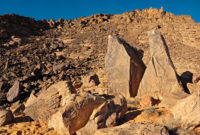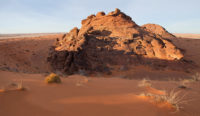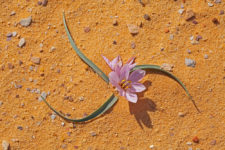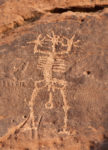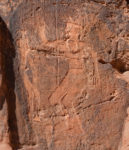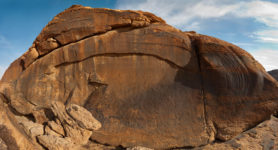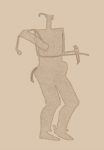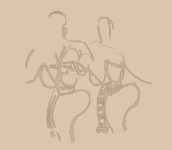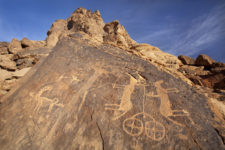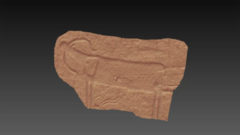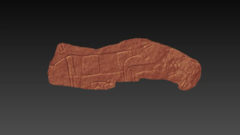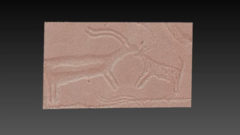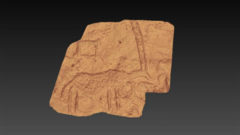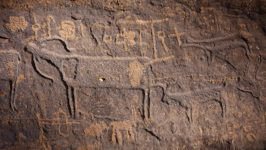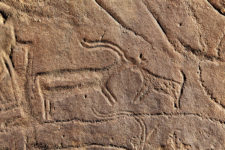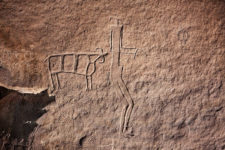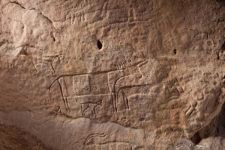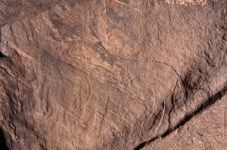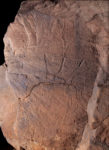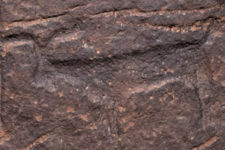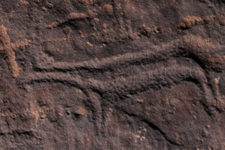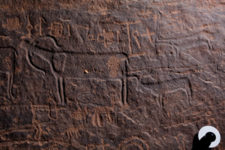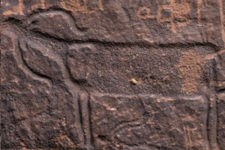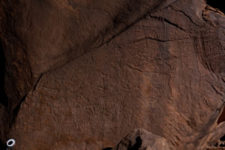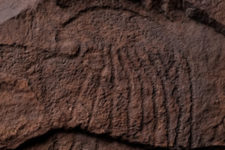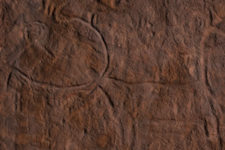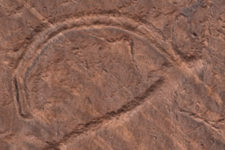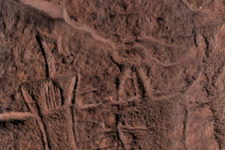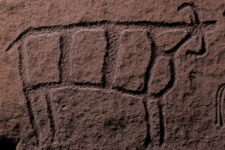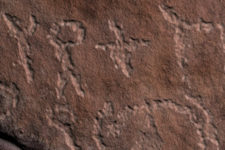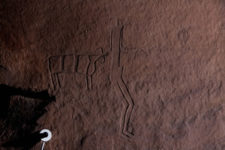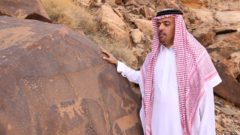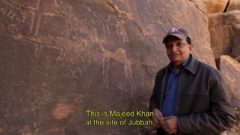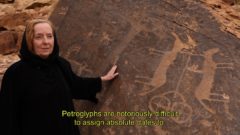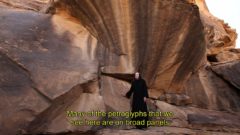 Two regions are known to contain the best and oldest examples of Neolithic rock art: Jubbah, northwest of the city of Ha’il – and Shuwaymis, southwest of Ha’il and near the town of al-Hayit. Of these two, Jubbah is the best known and most published.
Two regions are known to contain the best and oldest examples of Neolithic rock art: Jubbah, northwest of the city of Ha’il – and Shuwaymis, southwest of Ha’il and near the town of al-Hayit. Of these two, Jubbah is the best known and most published.
The oasis of Jubbah is the remnant of an ancient lake that was rich in wetter periods with people, flora and wildlife. Today, owing to the relatively high water table and modern hydrological technology, Jubbah is a rapidly growing town. The sand sea of the Nafud Desert surrounds the 16 by 5 km (10 by 3 mi) windswept plain around Jubbah. To the west of the oasis is Jebel um Sanman, or “Two Camel-hump Mountain.” It is this rise of sandstone where some of the best rock art in the Arabian Peninsula can be found.
The Neolithic images at Jubbah, as at Shuwaymis, are deeply incised into the stone cliff faces in areas where there frequently is no patina. The depth of the incisions allows the images to show distinctly as the sun rakes across them, even in the absence of any color change. These are extremely well executed and must have taken considerable time to complete.
The Jubbah petroglyphs include a variety of male and female figures that shed light on human activities, hairstyles, and clothing. In addition, social status is suggested by a few large figures wearing unique ornamentation. Hunting scenes document the wide range of animals procured during the Holocene Wet Phase, as well as the weaponry and strategies employed. These pastoral nomads hunted with bow and arrows, spears, and possibly throwing sticks. They also had packs of hunting dogs that surrounded the game during the hunt. Aspects of the scenes show affinities with rock art, mostly painted rather than engraved, across a broad band in North Africa that includes Algeria, Libya, and Egypt.
In 1879, Lady Anne Blunt, daughter of Lord Byron, and her husband Wilfrid traversed the Nafud Desert of northern Saudi Arabia on their way to the town of Ha’il. En route, they stopped at the way station at the oasis at Jubbah for a rest. Lady Anne was interested in purchasing Arabian horses, while Wilfrid was searching for examples of ancient inscriptions carved on stone outcrops. They were among the very first Westerners to witness the now famous rock art at Jubbah. Lady Anne captured the setting and its rich array of ancient art in her quote “Jubbah is one of the most curious places in the world, and to my mind one of the most beautiful.”
Archaeologist Juris Zarins, who worked in the Jubbah area for 20 years, is quoted in Saudi Aramco World (Harrington 2002) as saying “Pound for pound and piece for piece, in terms of rock art concentration and importance, Jubbah is the number-one or number-two site in the whole of the Middle East. It rivals anything in North Africa. With the art going back at least to the Pottery Neolithic period 7000 to 9000 years ago, and with paleo-environment and geology showing traces of human activity extending into the Middle Paleolithic period, it’s a treasure trove for answering questions about the Middle East.”
The sites of Qattar Cave and Ghouwtah are located slightly south of the main road heading east out of the town of Jubbah on a pyramidal dome. Qattar Cave contains a large panel depicting a Neolithic hunting scene. Ghouwtah has two main panels, both of which appear to be later in age, that show a number of species of animals, as well as humans.
